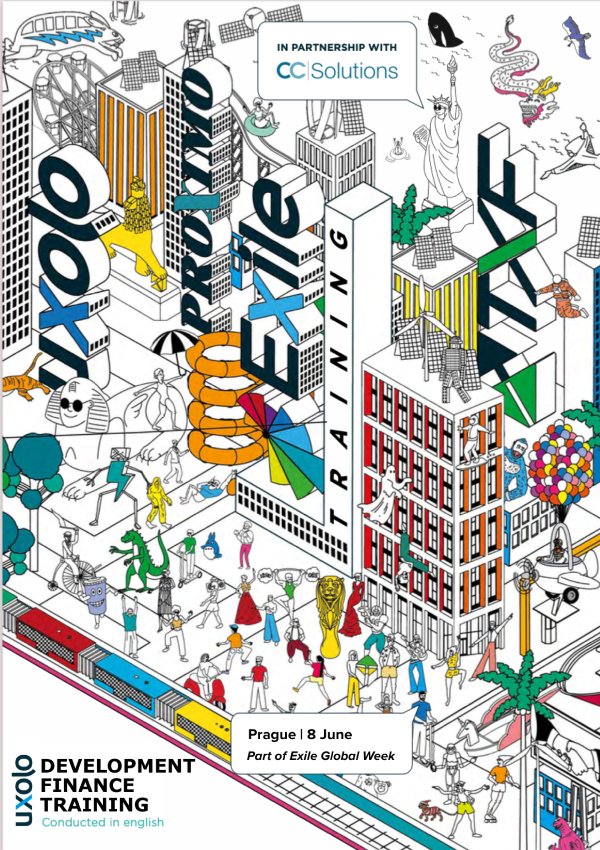Using blended finance to retire coal power plants
'Phasing down' of fossil fuels may have been the biggest criticism of COP26, while measures like the ADB-led Energy Transition Mechanism are looking at innovative financial engineering to retire coal early. But who is going to bear the costs?

The controversial last-minute rewording of “phase out” to “phase down” of fossil fuels in the final deal adopted at COP26 is believed to have major implications on climate finance, in the short and long term. At the annual climate conference in Glasgow, among the many initiatives announced to phase down, if not phase out, fossil fuels was the ADB-led Energy Transition Mechanism (ETM), which involves acquiring coal power plants and retiring them prematurely.
What is notable about this initiative is its blended finance approach, bringing together a cash-rich coalition of public and private banks and philanthropies, including the Japanese and Danish governments, multinational lender HSBC and the philanthropic foundations like Rockefeller Foundation, Bezos Earth Fund, and IKEA Foundation.
The mechanism will comprise two multibillion-dollar funds: one devoted to early retirement or repurposing of coal-fired power plants on an accelerated timeline, and the other focused on new clean energy investments in generation, storage, and grid upgrades. It is envisioned that multilateral banks, private institutional investors, philanthropic contributions, and long-term investors will provide capital for ETM.
At COP26, Japan announced a grant of $25 million toward ETM, and governments of Indonesia and Philippines announced partnerships with ADB to acquire and retire coal power plants in the two island countries. The Japanese grant is the first seed financing to be announced for ETM, which is being studied and piloted in Southeast Asia, starting with Indonesia and the Philippines. Pakistan has expressed interest in participating in the ETM initiative.
At the launch event in Glasgow, Masatsugu Asakawa, president of ADB, hailed the ETM as “a potential game changer in cutting greenhouse gas emissions in Asia and the Pacific by accelerating the transition from carbon-intensive energy to clean, reliable energy,”. Philippine Finance Secretary Carlos G declared that the ETM has the potential to “accelerate the retirement of coal plants by at least 10 to 15 years on average”.
The idea came out of a paper presented by Donald Kanak, chairman of Prudential Insurance Growth Markets, at the World Economic Forum, and has gained significant attention at COP26. The proposal, as outlined by Kanak and discussed in very broad terms in the media, would involve outside capital acquiring assets in coal-reliant Asian countries, running them for short periods, and then retiring ahead of the end of their useful life. Alongside the acquisition of these old assets, these investors would also fund the construction of new renewables capacity to replace the retiring coal. But the big questions remain: where is the money going to come from? And, whose balance sheets will the loses land on?
Mining private capital
The assumption central to the ETM is that the use of innovative financial engineering techniques, such as blended finance, would allow to reduce the cost of financing and to deliver ESG goals by reducing carbon emissions from the sector. “You will be able to amortise the financing more quickly if you get low-cost financing, and even more rapidly if you get carbon abatement credits. So, if you can show the value of the emissions and associated costs you are avoiding through the ETM and get it monetised, you will be able to retire it quickly. If no carbon abatement credits are recognized, it could take longer,” says Christian Déséglise, Global Head of Sustainable Finance and Investments at HSBC, in a conversation with Uxolo at COP26.
In this blended finance mechanism, Multilateral Development Banks like ADB will play various important roles. In particular, they could help select the plants best suited for premature retirement. For instance, they may be coal plants that have ample useful life ahead and that are less efficient in terms of emissions and impact. “On average, the useful life of coal plants in Asia is in excess of 30 years. Without carbon abatement credits, we may be able to retire them in, say, 15 years. It is a better scenario but not necessarily as fast as we wish. With carbon abatement credits, this may be significantly shortened to for instance 7 or 10 years. But we also have to be mindful of the fact that, as the plants are being retired, we will have to build replacement renewable capacity, provide storage and grid improvement – all this in a context of rapid growth in energy needs. So, it is unrealistic to think that the ETM can happen overnight,” says Déséglise.
The focus of ETM is to achieve impact, which would require scale and not simply retiring a couple of “dirty” coal power plants. “So, you need to build up public and private investment for that, and this can take a few years,” says Déséglise.
Cost or opportunity?
Even if the ETM sponsors and lenders can come up with a revenue model that would make everyone happy, there are several big challenges lurking outside the envelope of the blended finance structure. Decommissioning costs, for instance, is the biggest and foremost challenge. Who deals with the ash ponds left behind when coal-fired plants close? Who pays for the demolition of coal plants?
“Those are big costs,” says Andrew Johnstone, Director and CEO of Climate Fund Managers. “But there is a revenue line attached to it too. There is the adaptation carbon credit market, alternative land use where the plants can be repurposed, and there are alternative livelihoods to be created, where people can be reskilled and build new businesses with these skills. There are big risks associated with all these activities, but there is also a potential revenue, so depending on your risk appetite, one could see these as an investment as opposed to a cost.”
The original proposal by Kanak suggests that additional revenues might come from diverting fuel subsidies (governments might have very different ideas about how to redirect that spending), energy surcharges (which have proved to be very unpopular in developed countries), performance payments (which have yet to be defined) and carbon credits (which lenders have consistently struggled to accept as base case revenues).
Climate Investor One, a financing facility managed by The Climate Fund Managers, for example, has a development fund which is entirely donor funded. “Our development fund, while it seeks to recover the capital it deploys over its life, recognises that developing a project is a risky business, the capital could be lost and therefore become a cost. There is a mortality rate associated with project development and successful projects can't fully repay the cost of the ones that die. So, the development fund over the full period will likely lose money, but that is ok, provided the loss is absorbing a cost associated with the transitioning into a new world of climate sustainability, however it may not lose money, depending on the outcome of the development activity. By example one could attribute the “investment” in alternative livelihoods, decommissioning and repurposing, to that high risk tolerant pool of capital, and if the investment works, that’s great but if it doesn't, it's okay from a risk or return perspective. Other things like alternative land use, where you decommission and demolish a fossil fuel power station and re-use that land for solar parks, that is easily fundable. A power station turned into a water treatment plant is fundable. Anything that's an alternative infrastructure, real asset nature has a potential to be funded,” says Johnstone.
Upholding accountability
While the communities that hosted the coal plants will undoubtedly benefit from better health outcomes, particularly if the dirtiest plants close, they will very likely lose jobs compared to a replacement solar farm. Governments – rather than the purchasers of that coal-fired capacity - will be under pressure to find ways to mitigate those impacts. “Retiring coal plants has to align with the local needs,” says Déséglise. “Turning off lights overnight in a country where the electrification and energy needs are growing doesn’t work. So any energy transition mechanism needs to be in the framework of broader public policies, energy policies, Nationally Determined Contributions (NDCs), and also social policies.”
At COP26, behind all the headline-grabbing pledges and commitments pushed out by the PR machinery, the overarching sentiment in the plenary and meeting rooms was of accountability. As Jorim Schraven, Director of the Impact and ESG department at FMO, the Entrepreneurial Development Bank of the Netherlands, who has been attending the UN climate conferences since the historic Paris COP21 in 2015, puts it: “In Paris we were talking temperature, by COP24 in Katowice it was green house gas emissions avoidance, in Madrid we started talking about absolute emissions, carbon sequestration and net zero, and now here in Glasgow it is about phasing out fossil and measurement and real accountability. Over this period, we had started to deliver some of the tools needed for this, like the Joint Impact Model (JIM) to assess carbon emissions and the Partnership for Carbon Accounting Financials (PCAF), which was developed by the Dutch financial sector. PCAF is now actually referenced in the Task Force on Climate-related Financial Disclosures (TCFD). Adoption of these tools starts to make Climate Action real, tangible, and measurable, and now, therefore, accountable. That is the positive change here at COP26, and the space is now moving towards legal accountability.”
But the question remains whether initiatives like ETM would successfully hold governments, development, and commercial banks, accountable in phasing down fossil fuels, or would it go down as another greenwashing tool?





